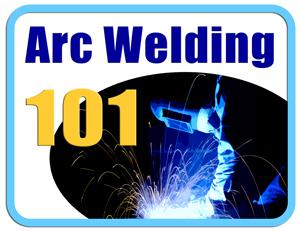- FMA
- The Fabricator
- FABTECH
- Canadian Metalworking
Categories
- Additive Manufacturing
- Aluminum Welding
- Arc Welding
- Assembly and Joining
- Automation and Robotics
- Bending and Forming
- Consumables
- Cutting and Weld Prep
- Electric Vehicles
- En Español
- Finishing
- Hydroforming
- Laser Cutting
- Laser Welding
- Machining
- Manufacturing Software
- Materials Handling
- Metals/Materials
- Oxyfuel Cutting
- Plasma Cutting
- Power Tools
- Punching and Other Holemaking
- Roll Forming
- Safety
- Sawing
- Shearing
- Shop Management
- Testing and Measuring
- Tube and Pipe Fabrication
- Tube and Pipe Production
- Waterjet Cutting
Industry Directory
Webcasts
Podcasts
FAB 40
Advertise
Subscribe
Account Login
Search
Arc Welding 101: Satisfying the weld inspector
- By Paul Cameron
- October 7, 2014
- Article
- Arc Welding
Q: We have a stiffener bar (continuity connection) in a column that calls for AWS D1.1 BTC-P4 for the flanges and fillet welds on both sides in the web. The stiffeners were field-welded. After assembling 35 connections, we discovered no fillet weld on the bottom side in the web. We can’t weld the bottom side of the stiffener now because of clearance. What are our options? Could we add more than the required ¼-inch fillet at the top of the stiffener to satisfy the inspector? He is not offering any solutions. He just wants the requirements to be met—a fillet weld on both sides.
Brian N.
A: Thank goodness for on-the-ball inspectors. The inspector’s role in this construction project is to monitor the fabrication and erection. Should issues arise, he is to bring them to the attention of those who need to know. Speaking from past experience, this can be a thankless job.
The inspector on your site is insisting the completed welds meet the requirements of the job’s documentation. When things go wrong and an inspector raises the red flag, those on the ground often look to him and ask, “What should we do?” The inspector’s first response should be to tell you to contact the engineer and come up with a documented solution.
Often when we start to brainstorm solutions on the job site, we don’t have all the facts, or we may not understand all the requirements, to make the call. For example, your suggestion for the missing weld on one side of the joint was to increase the weld size on the opposite side. There may be times when this is an acceptable solution, but if the engineer’s concern is the stress riser created from the missing fillet (which is often the case in today’s building construction), that oversized fillet would be of little benefit. And better to bring the issue into the light for engineering analysis now than to find out after the concrete has set that the fix was unacceptable.
Inspectors may or may not have the engineering background to make this call, but it is the engineer responsible for the project who should come up with an acceptable alternative.
Note: Brian contacted me to let me know that the solution to his welding issue was to back up, disassemble each connection, and add the originally required ¼-inch fillet weld. Good call!
About the Author

Paul Cameron
Braun Intertec
4210 Highway 14 East
Rochester, MN 55904
About the Publication
subscribe now

The Welder, formerly known as Practical Welding Today, is a showcase of the real people who make the products we use and work with every day. This magazine has served the welding community in North America well for more than 20 years.
start your free subscription- Stay connected from anywhere

Easily access valuable industry resources now with full access to the digital edition of The Fabricator.

Easily access valuable industry resources now with full access to the digital edition of The Welder.

Easily access valuable industry resources now with full access to the digital edition of The Tube and Pipe Journal.
- Podcasting
- Podcast:
- The Fabricator Podcast
- Published:
- 04/16/2024
- Running Time:
- 63:29
In this episode of The Fabricator Podcast, Caleb Chamberlain, co-founder and CEO of OSH Cut, discusses his company’s...
- Trending Articles
Sheffield Forgemasters makes global leap in welding technology

Welding student from Utah to represent the U.S. at WorldSkills 2024

Lincoln Electric announces executive appointments

Engine-driven welding machines include integrated air compressors

ESAB unveils Texas facility renovation

- Industry Events
16th Annual Safety Conference
- April 30 - May 1, 2024
- Elgin,
Pipe and Tube Conference
- May 21 - 22, 2024
- Omaha, NE
World-Class Roll Forming Workshop
- June 5 - 6, 2024
- Louisville, KY
Advanced Laser Application Workshop
- June 25 - 27, 2024
- Novi, MI



























